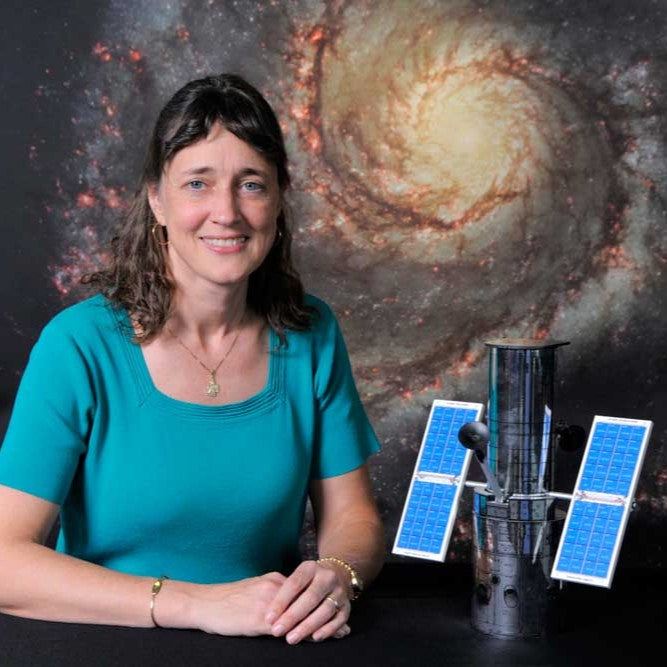
Blog Feature: Dr. Jennifer Wiseman
Share

Dr. Jennifer Wiseman - Credit NASA
Fun Fact: Despite its supersonic speed, Hubble’s orbit outside the distortion of Earth’s atmosphere allows it to take extremely high-res images with substantially lower background light than ground-based telescopes.
Wiseman studies star forming regions of our galaxy using radio, optical, and infrared telescopes, with a primary focus on molecular cloud cores, protostars, and outflows. Heavy stuff! Her primary objective for the Hubble project is pretty straightforward though (haha): to ensure that the Hubble mission is as scientifically productive as possible. Previously, she was the head honcho at the Laboratory for Exoplanets and Stellar Astrophysics, where folks do just that – study the formation and evolution of stars and planetary systems using advanced telescopes and theoretical techniques.

Hubble Telescope above planet Earth - Image Credit NASA
In 2003, Wiseman kicked off her career with NASA as the Program Scientist for Hubble and a handful of other astrophysics missions at NASA headquarters. Before she went to bat with the big boys, she was an undergraduate studying Physics at MIT. It’s there that she discovered the comet 114P/Wiseman-Skiff in the late ‘80s. Wiseman went on to earn a Ph.D. in Astronomy at Harvard University, and dove head first into her research as a Jansky Fellow at the National Radio Astronomy Observatory in Virginia and a Hubble Fellow at The Johns Hopkins University in Maryland.
Fun Fact: Since its launch, Hubble has returned more than 1 million observations – and we use some of these incredible images for our galaxy jewelry!

Aside from her extensive work in astrophysics, Wiseman has been involved in shaping science policy and increasing public science outreach and engagement for several years. She has served as a Congressional Science Fellow for the American Physical Society (APS), an elected councilor of the American Astronomical Society (AAS) and former President of the American Scientific Affiliation (ASA), a network of Christians interested in Science. Furthermore, she has been the Director of the Dialogue on Science, Ethics and Religion (DoSER) program for the American Association for the Advancement of Science (AAAS) since 2010.
According to Wiseman, one of the most intriguing projects that DoSER has undertaken since she’s been in a directorial role is called The Perceptions Program. She explains, “this was an effort to understand the underlying perceptions, right or wrong, that various religious communities have about science and scientists – and likewise the perceptions that scientists have about various religious communities.” Through talks and presentations given to various schools, churches and civic organizations, Wiseman endeavors to convey the excitement and importance of scientific exploration while remaining vocal about her religious views.
Thank you, Dr. Jennifer Wiseman, for your powerhouse participation within the scientific and religious communities, and for working to bridge the gap and increase dialogue between the two realms. The HST has allowed us Earthlings to peek deeper into perplexing pockets of space than we ever thought was possible; and, as fate would have it, for Lauren and I to be able to create beautiful jewelry that celebrates the wondrous discoveries being made on the cosmic frontier.
And as always, thank YOU, lovely readers, for your continued support as we do what we love!
xo
Brittany


